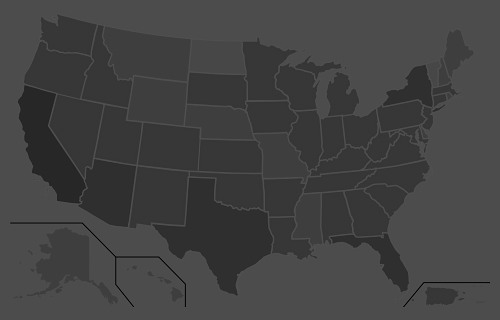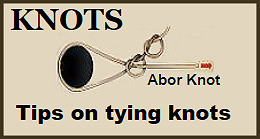“Our added winter moisture and active calling period led to a very long nesting and hatching season, starting in late April and extending into early summer, with chicks hatching as late as early July,” O’Dell said. “From a population standpoint, we are out of a deficit for the first time since 2001-2002. Quail are starting to pop up in places they haven’t been seen in a while.
“If you’ve never had the chance to experience what Arizona quail hunting built its name on, then this would be the year to get out and enjoy it.”
Meanwhile, hunters should note that the season for Mearns’ quail doesn’t begin until Dec. 4. It’s summer rainfall that plays a key role in nesting success and population numbers of this species. After a spotty and relatively weak monsoon across southern Arizona, these birds are likely to be abundant only in pockets that received sufficient precipitation this summer.
A valid Arizona hunting or combination hunt and fish license is required for all hunters 10 and older. Those hunters under 10 must either have a valid hunting or combination hunt and fish license, or be accompanied by an adult who possesses a valid hunting or combination hunt and fish license. Licenses can be purchased online or at license dealers statewide. A youth combination hunt and fish license (ages 10 to 17) is $5.
The general bag limit is 15 quail per day in the aggregate, of which no more than eight may be Mearns’ quail (when the Mearns’ season opens Dec. 4). The general possession limit is 45 quail in the aggregate after opening day, of which no more than 15 Gambel’s, scaled or California quail in the aggregate may be taken in any one day. After the opening of the Mearns’ season, the 45-quail possession limit may include 24 Mearns’ quail, of which no more than eight may be taken in any one day.
More quail-hunting information can be found on the department’s website at https://www.azgfd.com/Hunting/. Another resource for both new and experienced hunters alike is “An Introduction to Hunting Arizona’s Small Game.” Written by Randall D. Babb, the 196-page, full-color book covers where and how to hunt small game birds (like quail), squirrels, rabbits, ducks and geese. It also includes how to prepare and cook your harvest, with illustrations and recipes. The book can be ordered for $16.95 at www.azgfd.gov/publications.
Finally, hunters should check out O’Dell’s techniques for field-dressing quail at https://www.youtube.com/watch?v=3gRwZAcWzzk.
####
Publishers Notes: OUT OF STATE HUNTERS, FISHERMEN & OUTDOOR ENTHUSIASTS; Due to the Covid 19 pandemic, there could be limitations for OUT of STATE hunters, fishermen and other outdoor enthusiasts to include a 14-day quarantine requirement or negative COVID-19 testing alternative. Please check with the State's Department of Natural Resources BEFORE you travel or apply for the 2020 Fall Hunts.


Disclaimer: The views expressed on this site are that of the authors and not necessarily that of TBC Press

Arkansas New 2021 Private Land Dove Permit Period Opens Aug 1st
Submitted by: TBC Press
Posted on: 07/29/21

The Backcountry Press

The country's premier daily HUNTING, FISHING & OUTDOOR news in the USA and around the globe. Read whats happening in your neck of the woods & beyond.
© 2020 TBC Press - All Rights Reserved Website Design by:
News # 14435
An additional region of the state, the southwest quadrant, will be served this dove season by the addition of a private field in the Arkansas Game and Fish Commission’s private-land permit dove hunting program.
A 40-acre field planted in sunflowers and situated in Lafayette County near Gin City, west of Bradley, will be part of the program, offering permit hunting during the first three weekends of the 2021 Arkansas dove season, which opens Sept. 4. This field joins four other previously leased fields in northeast, northwest and central Arkansas. Two fields will offer hunting during the first two weeks of the season, and three others will have hunting for the first three weekends.
The AGFC will accept applications for the hunts Aug. 1-15 for the five private fields throughout the state, with the drawing for permits held Aug. 18.
The following locations and dates are available for the 2021 hunt drawing:
- Greene County (60 acres of sunflowers; may have top-sewn wheat in some areas) — Sept. 4-5, Sept. 11-12 (20 permits available per weekend).
- Lonoke County (30 acres of sunflowers) — Sept. 4-5, Sept. 11-12, Sept. 18-19 (20 permits available per weekend).
- Prairie County (60 acres of sunflowers) — Sept. 4-5, Sept. 11-12, Sept. 18-19 (45 permits available per weekend).
- Washington County (57 acres of harvested corn and top-sewn wheat) — Sept. 4-5, Sept. 11-12 (40 permits available per weekend).
- Lafayette County (40 acres of sunflowers) — Sept. 4-5, Sept. 11-12, Sept. 18-19 (16 permits).
Applications require a $5 processing fee. Applicants may choose a particular weekend or field, and a second choice. Permit winners will be notified after the drawing and will be emailed maps and directions to their fields. No other hunting is allowed on these fields. No scouting or access to the fields will be allowed outside of the hunt days drawn. Hunters may bring one hunting partner with them to enjoy the hunt, but both hunters must hunt together at a designated shooting station within the permitted area.
The program is in its fifth year and began with the one field in Lonoke County. Last year marked the first year for AGFC biologists to obtain a private field in northeast Arkansas, and this year’s addition of southwest Arkansas pleases James “Bo” Reid, an AGFC private lands biologist who oversees the program.
“We were able to secure some additional funding this year to further expand the program a little bit,” Reid said. “(Southwest Arkansas) was one place where we had a farmer interested in doing it, and we jumped on it.”
Reid said inclement weather earlier this year affected planting “at a couple of other fields we were looking to include. But all in all I think we did a better job in expanding the program to more parts of the state, and I was excited about that.”
Another interesting change this year concerns the leased field in Prairie County, near Des Arc. In other cases, the AGFC and the landowner agree on a working arrangement and the farmer handles the preparations for the field (such as planting of sunflowers or corn, harvesting, and so forth). But at Prairie County, the AGFC leased the field from the owner “and our staff planted it,” Reid said. “We did the work ourselves. We were able to get it for a little less money by doing that and we’re getting a little more bang for our buck there.” AGFC biologist Jacob Bokker, in the Brinkley office, has handled that effort, Reid noted.
The daily bag limit for mourning dove and white-winged dove is 15, with a possession limit of 45. There is no daily bag limit or possession limit for Eurasian collared-dove.
Reid said he wasn’t aware of the dove numbers expected to migrate through Arkansas as summer winds down, “but I’m more worried with getting sunflowers in the ground or corn planted. If we can get the food there, the doves will be there.”
To apply starting Sunday, Aug. 1, for a permit, click on the “Buy Licenses\Check Game” button at the top of the agfc.com website. Once in the system, go to “Special Hunt Applications.”
Visit www.agfc.com/dove for more information on dove fields and dove hunting in Arkansas.
####









